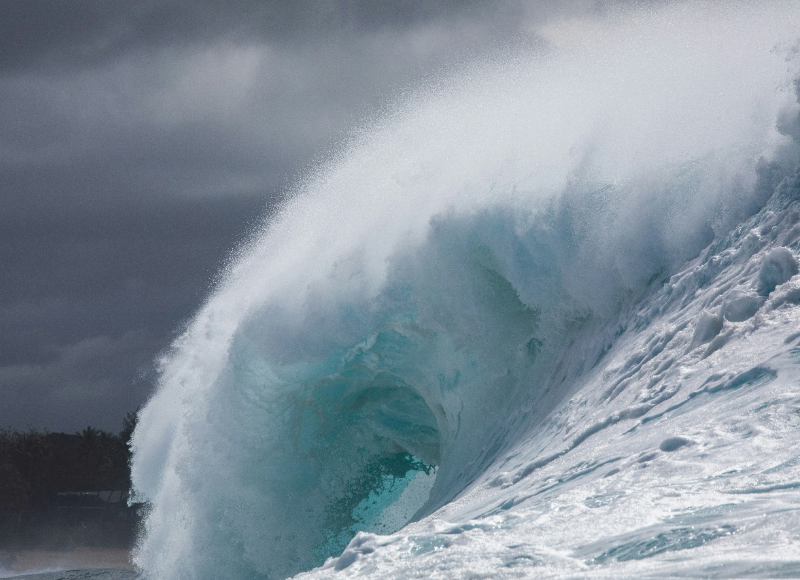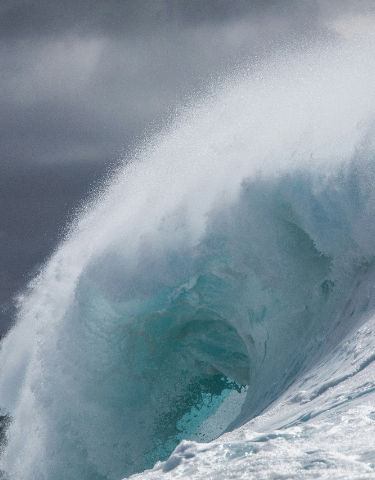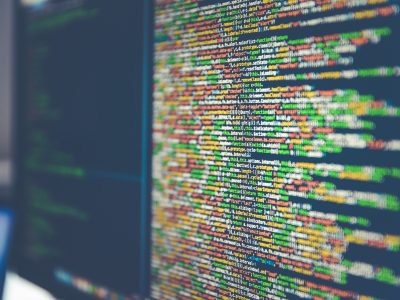Introduction
Coastal communities worldwide face the perennial threat of tsunamis—rare, unpredictable, high-impact disasters that demand rapid and effective early warning systems for risk mitigation. On July 29, 2025, a magnitude 8.8 earthquake off Russia’s Kamchatka Peninsula triggered a Pacific-wide tsunami. What made this event historically significant was not the wave’s destructive force, but the debut of NASA’s Guardian system—a space-based, real-time tsunami detection tech that provided up to 30–40 minutes’ advance warning before landfall in vulnerable regions like Hawaii. This breakthrough signals a transformative shift in disaster preparedness, highlighting how integrated, technology-driven approaches can redefine risk management at sea.
The Risks of Tsunamis at Sea
From a risk management perspective, the primary hazard—a tsunami—presents a complex interplay of risks that demand a sophisticated risk identification process :
1.Operational Risk
The most significant risk is the temporal gap between the tsunamigenic event (e.g., earthquake, volcanic eruption, landslide) and the issuance of a verified, actionable warning. Traditional risk identification relies on ground-based seismic networks and Deep-ocean Assessment and Reporting of Tsunamis (DART buoys), which require time for wave propagation and data processing.
- Impact – Increased loss of life, reduced evacuation time, and higher structural damage.
- Guardian System’s Role – By identifying the pressure wave’s signature on the ionosphere (the gravity wave), the system bypasses the time required for the sea-surface wave to reach the nearest DART buoy, effectively shrinking the latency window to minutes.
2.Technology Risk
A False Negative occurs when a genuine hazard is not detected, often due to sensor malfunction, power failure, or inadequate spatial coverage.
- Impact – Complete failure of the Disaster Risk Reduction plan and unexpected catastrophe.
- Guardian System’s Role – As a space-based Earth Observation (EO) system using satellite-based system data, it provides global, wide-area coverage, offering a crucial layer of redundancy and a low probability of single-point failure compared to a scattered network of physical buoys.
- Although satellite-based systems provide valuable data, there is always a risk of technical failures, such as satellite malfunctions, data transmission delays, or system inaccuracies. These could impact the timeliness and reliability of the early warnings.
3.Strategic & Reputational Risk
A perfect detection system is useless if the warning does not translate into timely public action. Risks here include –
- Over-Reliance on Single Channel – Dependence on sirens or a single communication medium.
- Public apathy due to frequent False Positive warnings from overly sensitive or unverified systems.
- Vague or non-localised warnings failing to drive specific evacuation behaviours.
- Dependency on Infrastructure – The effectiveness of the Guardian System is contingent on the presence of adequate infrastructure for data dissemination and emergency response. In regions where infrastructure is underdeveloped, the benefits of the Guardian System might be limited.
4.External Risk
The increase in submarine landslides triggered by destabilised underwater slopes—a potential side-effect of rising sea temperatures and polar ice melt—introduces new, highly localized, and often rapid-onset tsunami risks that traditional seismic models are ill-equipped to handle.
5.Financial Risk
The implementation of satellite-based warning systems can be expensive, especially for low-income countries or regions that are not as well equipped for advanced technology deployment. The introduction of such systems will depend on the adoption of effective financial risk management strategies. Ensuring equitable access to these technologies may require international collaboration and funding.
6.Social Risk
Despite early warnings, social factors—such as distrust of authorities, lack of awareness, or resistance to evacuation orders—can impede effective disaster response. Risk communication strategies should complement early warning systems by addressing these social dynamics.
How NASA’s Guardian System mitigates risks from tsunamis
By providing a critical early warning before tsunami landfall, the system offers several strategic mitigation benefits –
- Guardian does not replace seismic or pressure-buoy systems but complements and augments them. It offers a second, independent line of verification for tsunami generation, enhancing decision confidence in uncertain scenarios.
- Real-time data can inform more dynamic evacuation, resource allocation, and interagency communication—critical for time-sensitive disaster response.
- Through continuous monitoring of oceanic and atmospheric parameters, the Guardian System allows for a more granular understanding of risks. Governments and humanitarian organizations can make informed decisions about resource allocation, evacuation routes, and disaster response priorities, optimizing their preparedness strategies.
- One of the challenges of traditional tsunami warning systems is the potential for false alarms, which can lead to unnecessary evacuations and a loss of trust in early warning systems. NASA’s Guardian System offers a high degree of accuracy, reducing the risk of false positives and improving the system’s reliability over time.
- By providing access to real-time satellite data, the Guardian System opens the door for global collaboration in disaster risk reduction. Nations can share data, research, and best practices, strengthening global preparedness and response strategies.
Risk Mitigation Strategies
While NASA’s Guardian System offers significant promise, it is important to adopt a risk-based view to improve its efficacy and address potential limitations –
- Adopting machine learning models for rapid signal analysis and anomaly detection. These models can calculate predicted inundation levels for specific coastal areas based on the confirmed wave characteristics, allowing authorities to issue micro-localised, dynamic evacuation zones, reducing the over-evacuation and cost associated with static maps.
- Using Artificial Intelligence (AI) to generate clear, concise warning messages tailored to specific local demographics, language, and cultural context, mitigating the risks associated with warning communication.
- Expansion of the Global Navigation Satellite System (GNSS) ground station network for finer coverage around high-risk coastlines can prevent risks arising from delayed detection & sparse coverage.
- Automated public warning interfaces that relay the Guardian System data instantly to officials and, where appropriate, the public. This addresses slow or ineffective warning dissemination.
- Policy and infrastructure investment to integrate multi-source tsunami warnings—GNSS, seismic, buoy, and even crowd-sourced reporting—into a unified decision-support tool. This will prevent uncertainty in tsunami confirmation.
- The Guardian System’s data can be integrated with local emergency response systems, providing real-time updates to authorities and helping them activate evacuation and relief measures. The system can also issue region-specific alerts, considering factors like the topography and infrastructure of the affected area. Doing so will allow response teams to have access to complete information while preparing an emergency response.
Risk Monitoring – Continuous Vigilance for Tsunami Preparedness
Effective risk management requires continuous monitoring to ensure early detection and to track the progress of risk mitigation efforts. In the context of tsunami preparedness, monitoring systems must focus on –
- Real-time monitoring of seismic activity to identify the likelihood of tsunami generation. NASA’s system monitors changes in oceanic conditions that may be linked to seismic events.
- Tracking fluctuations in oceanic conditions, including sea risks such as sea level rise, pressure changes, and shifts in temperature and salinity that might indicate an impending tsunami. By continuously monitoring these parameters, the system can provide early alerts with a high degree of accuracy.
- Robust communication networks to disseminate information. The Guardian System’s ability to integrate data from various satellites and sensors ensures a real-time, multi-layered approach to risk monitoring, enhancing the overall response capacity.
- Risk monitoring requires clear Key Risk Indicators (KRIs). The Guardian system introduces novel performance metrics – (i) Warning Lead Time (KRI) – The time from satellite detection to confirmed, actionable public warning. The 30-minute lead time sets a new operational baseline. (ii) System Uptime and Redundancy – Continuous measurement of the availability of all GNSS/EO assets, ensuring the system’s robust performance against technology risk.
Risk Management Lessons on Disaster Risk Preparedness
The deployment of NASA’s Guardian System offers several important lessons for disaster risk preparedness:
- Proactive Risk Identification – The Guardian System’s success underscores the importance of proactive risk identification in disaster risk management. By using advanced technology to detect early warning signs, authorities can act before the disaster reaches its full impact.
- Latency is the Ultimate Operational Risk – In Disaster Risk Reduction, the core objective is to reduce the time between hazard identification and public action. Any system that reduces this ‘latency risk’ directly translates to increased lives saved and is the highest priority for investment.
- Technological Integration – Disaster risk management strategies should prioritize the integration of new technologies into existing systems. The Guardian System shows that combining satellite technology with local emergency response frameworks can lead to more effective preparedness.
- Embrace Multi-Hazard and Interdependency Thinking – Risk professionals must design Disaster Risk Reduction systems that can manage simultaneous, cascading risks, not just single-source hazards (e.g., earthquake or volcano or landslide).
- Redundancy Must Be Cross-System – True resilience comes from having wholly different types of systems (space-based vs. sea-based) confirming the same event, ensuring that the failure of one technological paradigm does not lead to complete system collapse.
- Global Cooperation and Data Sharing – Disaster risk is inherently a global challenge. The Guardian System highlights the importance of cross-border cooperation, data sharing, and joint risk mitigation efforts to enhance global preparedness.
- Comprehensive Risk Communication – Effective risk communication is a critical element of disaster preparedness. The Guardian System’s alerts must be accompanied by clear and actionable instructions on tsunami safety to ensure that affected populations understand how to respond.
Pitfalls to Avoid
- The Technology Trap – While technology is a powerful tool in disaster risk management, believing that new technology (like Guardian) is a replacement for, rather than an enhancement of, existing risk controls (like DART buoys) factors can lead to gaps in preparedness.
Pitfall – Dismantling old systems before the new system’s operational reliability is fully proven across all scenarios. Failing to update systems or relying on outdated technology can hinder the effectiveness of early warning efforts. Authorities must balance technological solutions with community engagement and education. Technological advancements should be continuously integrated into disaster management systems.
- Communication Lag – Achieving a 30-minute warning lead time is useless if the administrative, political, and communication chain requires 25 minutes to issue the final siren.
Pitfall – Ignoring the human and bureaucratic latency in the action phase of the risk process.
- Underestimating Residual Risk – Assuming a high-tech solution eliminates all risk.
Pitfall – Failing to plan for the remaining, unmitigated risks, such as power grid failure immediately following the seismic event that cripples local warning dissemination hardware.
- Ignoring Local Contexts – Each tsunami-prone region has its own unique challenges. Coastal disaster preparedness can be achieved when risk management systems, including the Guardian System, are tailored to local needs, considering factors like geography, infrastructure, and population density.
Conclusion
NASA’s Guardian System, a sophisticated application of space-based Earth Observation, represents a definitive leap forward in global disaster risk preparedness. Its capacity to mitigate the critical Latency Risk through rapid, satellite-based detection fundamentally alters the risk landscape for coastal communities. The system shifts the Enterprise Risk Management (ERM) focus from reactive management of consequences to proactive, real-time intelligence.
The true measure of Guardian’s success will not be the precision of its data, but the speed and reliability with which that data translates into protected lives on the world’s most vulnerable coastlines.















